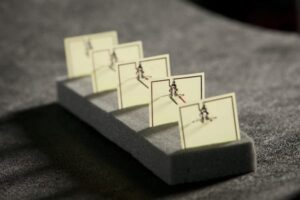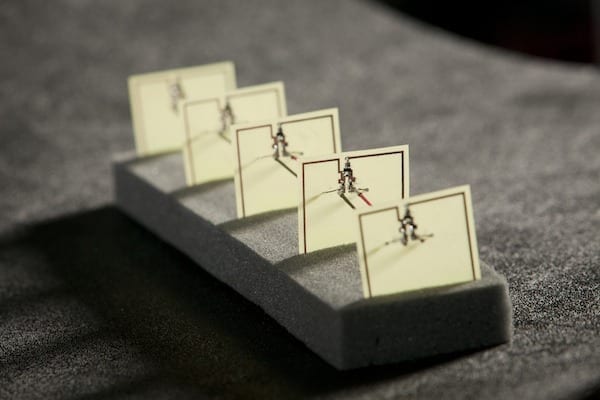
“Our work demonstrates a simple and inexpensive approach to electromagnetic power harvesting,”
Using inexpensive materials configured and tuned to capture microwave signals, researchers at Duke University’s Pratt School of Engineering have designed a power-harvesting device with efficiency similar to that of modern solar panels.
The device wirelessly converts the microwave signal to direct current voltage capable of recharging a cell phone battery or other small electronic device, according to a report appearing in the journal Applied Physics Letters in December 2013. (It is now available online.)
It operates on a similar principle to solar panels, which convert light energy into electrical current. But this versatile energy harvester could be tuned to harvest the signal from other energy sources, including satellite signals, sound signals or Wi-Fi signals, the researchers say.
The key to the power harvester lies in its application of metamaterials, engineered structures that can capture various forms of wave energy and tune them for useful applications.
Undergraduate engineering student Allen Hawkes, working with graduate student Alexander Katko and lead investigator Steven Cummer, professor of electrical and computer engineering, designed an electrical circuit capable of harvesting microwaves.
They used a series of five fiberglass and copper energy conductors wired together on a circuit board to convert microwaves into 7.3V of electrical energy. By comparison, Universal Serial Bus (USB) chargers for small electronic devices provide about 5V of power.
“We were aiming for the highest energy efficiency we could achieve,” said Hawkes. “We had been getting energy efficiency around 6 to 10 percent, but with this design we were able to dramatically improve energy conversion to 37 percent, which is comparable to what is achieved in solar cells.”
“It’s possible to use this design for a lot of different frequencies and types of energy, including vibration and sound energy harvesting,” Katko said. “Until now, a lot of work with metamaterials has been theoretical. We are showing that with a little work, these materials can be useful for consumer applications.”
For instance, a metamaterial coating could be applied to the ceiling of a room to redirect and recover a Wi-Fi signal that would otherwise be lost, Katko said. Another application could be to improve the energy efficiency of appliances by wirelessly recovering power that is now lost during use.
“The properties of metamaterials allow for design flexibility not possible with ordinary devices like antennas,” said Katko. “When traditional antennas are close to each other in space they talk to each other and interfere with each other’s operation. The design process used to create our metamaterial array takes these effects into account, allowing the cells to work together.”
Go deeper with Bing News on:
Microwave energy harvesting
- Japan outlines ambitious plans for space-based solar station: 'Gearing up to test ... next year'
In recent years, humans have managed to harvest huge amounts of energy from the sun using solar panels installed on roofs, in fields, and even on water. But the next frontier for solar energy is one ...
- The 5 best microwaves of 2024, tested and reviewed
How microwaves work Compared to stovetops or ovens, microwaves are different in that they generate energy in the form of electrical and magnetic rays. "Microwaves generate 'microwaves,' which is a ...
- Can you microwave glass? Plus plastic, foil, paper and more
They make become warm during heating or cooking because of heat transfer from the food, but the containers themselves should not themselves absorb microwave energy. However, even if fine bone china is ...
- Best microwaves in 2024
In addition, the best microwave needs to be powerful enough to heat food evenly without leaving hot or cold parts. With so many different types available, it can be tricky to know which model is ...
- How to Clean a Microwave
She used 72 bags of popcorn to find the best microwave (and set the office on fire only once). Jessica Samson, cleaning expert and director of national branding with a 40-year-old national ...
Go deeper with Google Headlines on:
Microwave energy harvesting
[google_news title=”” keyword=”Microwave energy harvesting” num_posts=”5″ blurb_length=”0″ show_thumb=”left”]
Go deeper with Bing News on:
Energy harvesting
- Prototype promising sustainable energy future launched
India-based company INFRGY LLC has launched a prototype device that could revolutionize the energy landscape. This reportedly integrates wireless technology with energy harvesting capabilities, ...
- Researchers Boost Energy Output by 4.5% with Reflective Surface Innovation
Researchers from the University of Ottawa have devised a method to amplify solar power generation by an impressive 4.5%.
- Purdue, Wabash National collaborate on composite trailer that recaptures its own energy
An experimental trailer that harvests its own electricity is anticipated to make trailers more sustainable and energy-efficient.
- Energy Harvesting Market Projected to Reach USD 1950 Million by 2033, with a 7.5% CAGR Forecast
The global energy harvesting market is estimated to attain a valuation of USD 940.7 million in 2023 and is projected to reach USD 1950 million by 2033, trailing a CAGR of 7.5% during the forecast ...
- The Evolution Of Solar Energy: How Solar Panels Have Changed Over The Years
The evolution of solar is a long story that hasn't come close to finishing. Here's how solar panels have changed and evolved over the years.
Go deeper with Google Headlines on:
Energy harvesting
[google_news title=”” keyword=”energy harvesting” num_posts=”5″ blurb_length=”0″ show_thumb=”left”]











